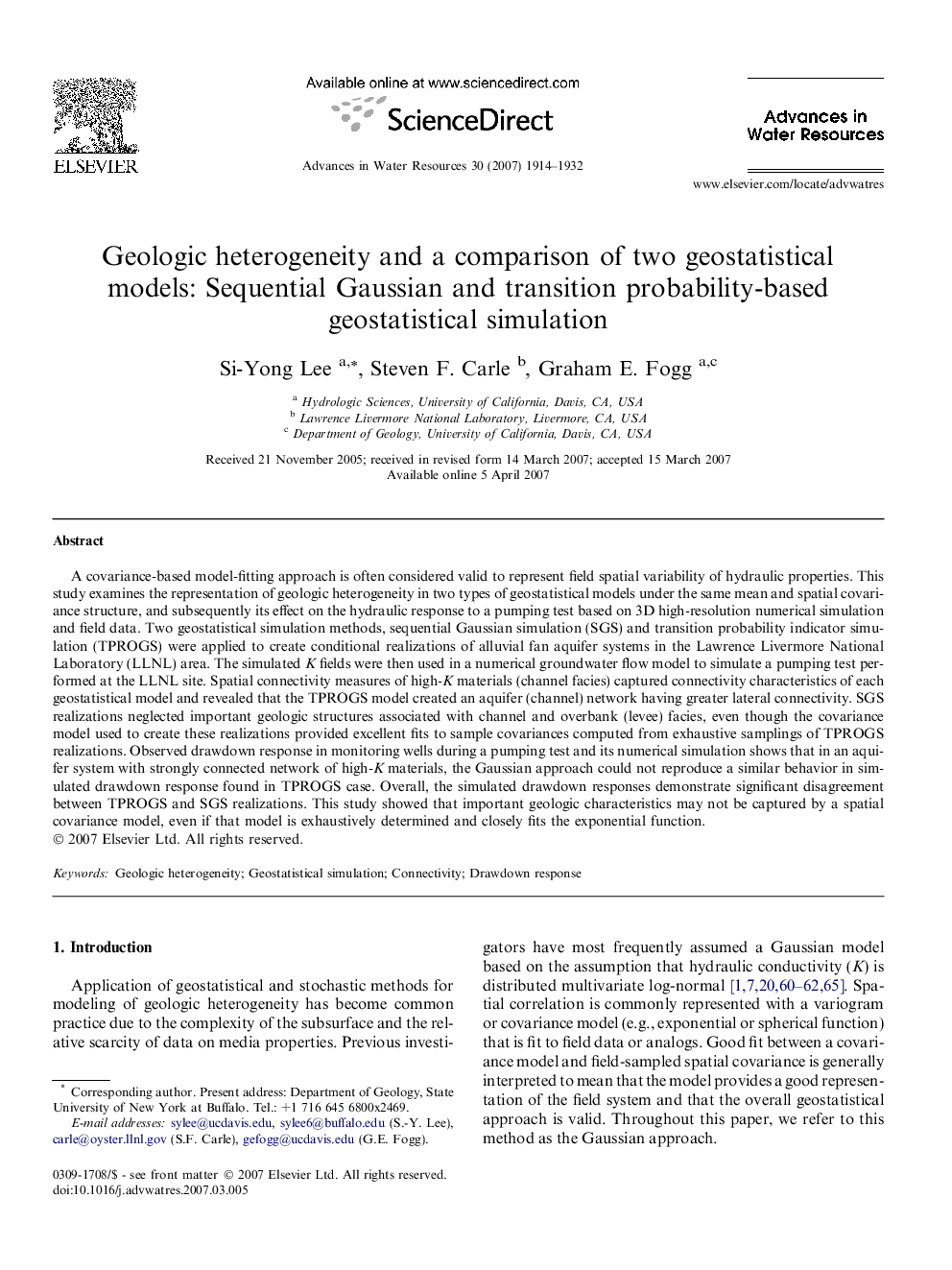| Article ID | Journal | Published Year | Pages | File Type |
|---|---|---|---|---|
| 4526681 | Advances in Water Resources | 2007 | 19 Pages |
A covariance-based model-fitting approach is often considered valid to represent field spatial variability of hydraulic properties. This study examines the representation of geologic heterogeneity in two types of geostatistical models under the same mean and spatial covariance structure, and subsequently its effect on the hydraulic response to a pumping test based on 3D high-resolution numerical simulation and field data. Two geostatistical simulation methods, sequential Gaussian simulation (SGS) and transition probability indicator simulation (TPROGS) were applied to create conditional realizations of alluvial fan aquifer systems in the Lawrence Livermore National Laboratory (LLNL) area. The simulated K fields were then used in a numerical groundwater flow model to simulate a pumping test performed at the LLNL site. Spatial connectivity measures of high-K materials (channel facies) captured connectivity characteristics of each geostatistical model and revealed that the TPROGS model created an aquifer (channel) network having greater lateral connectivity. SGS realizations neglected important geologic structures associated with channel and overbank (levee) facies, even though the covariance model used to create these realizations provided excellent fits to sample covariances computed from exhaustive samplings of TPROGS realizations. Observed drawdown response in monitoring wells during a pumping test and its numerical simulation shows that in an aquifer system with strongly connected network of high-K materials, the Gaussian approach could not reproduce a similar behavior in simulated drawdown response found in TPROGS case. Overall, the simulated drawdown responses demonstrate significant disagreement between TPROGS and SGS realizations. This study showed that important geologic characteristics may not be captured by a spatial covariance model, even if that model is exhaustively determined and closely fits the exponential function.
